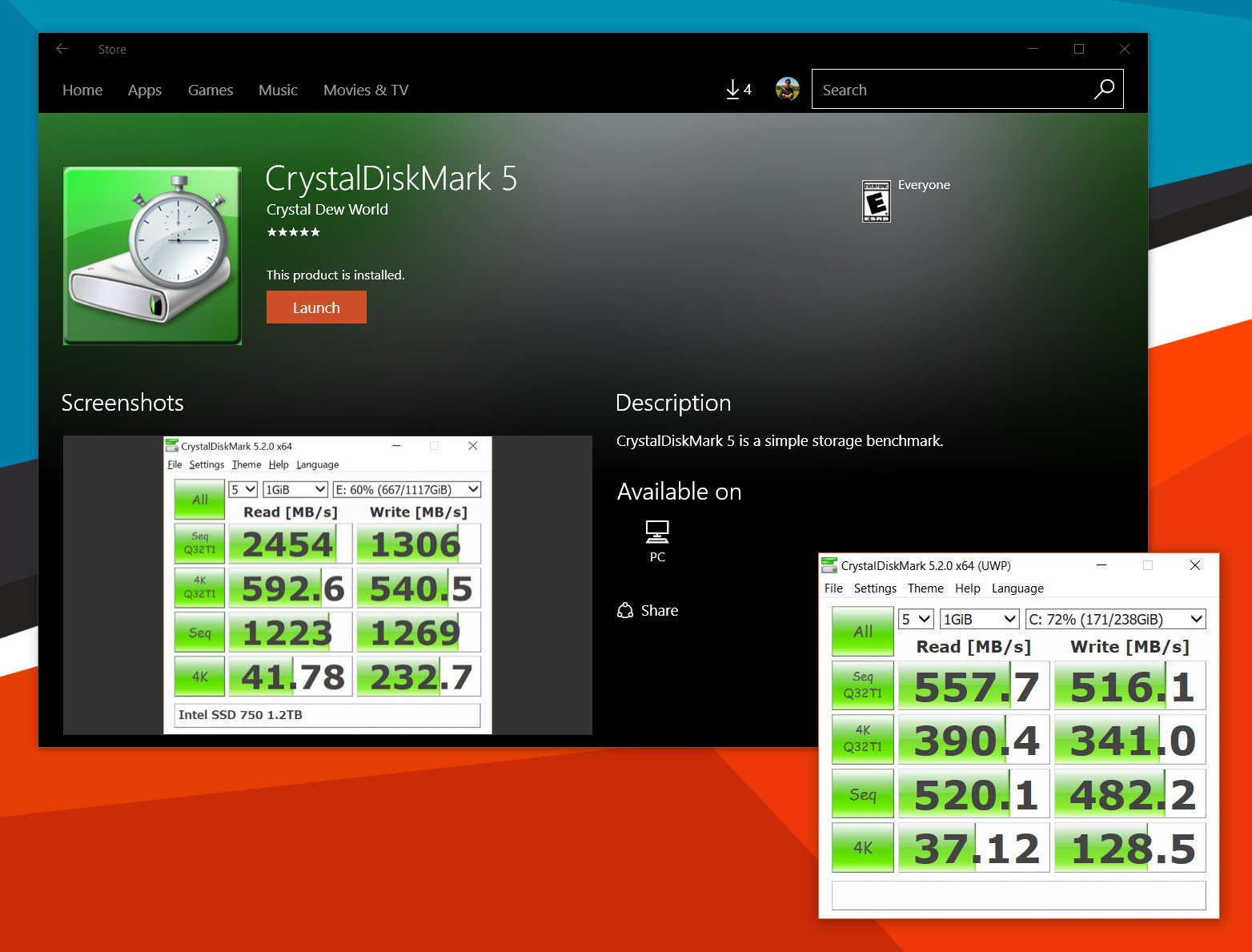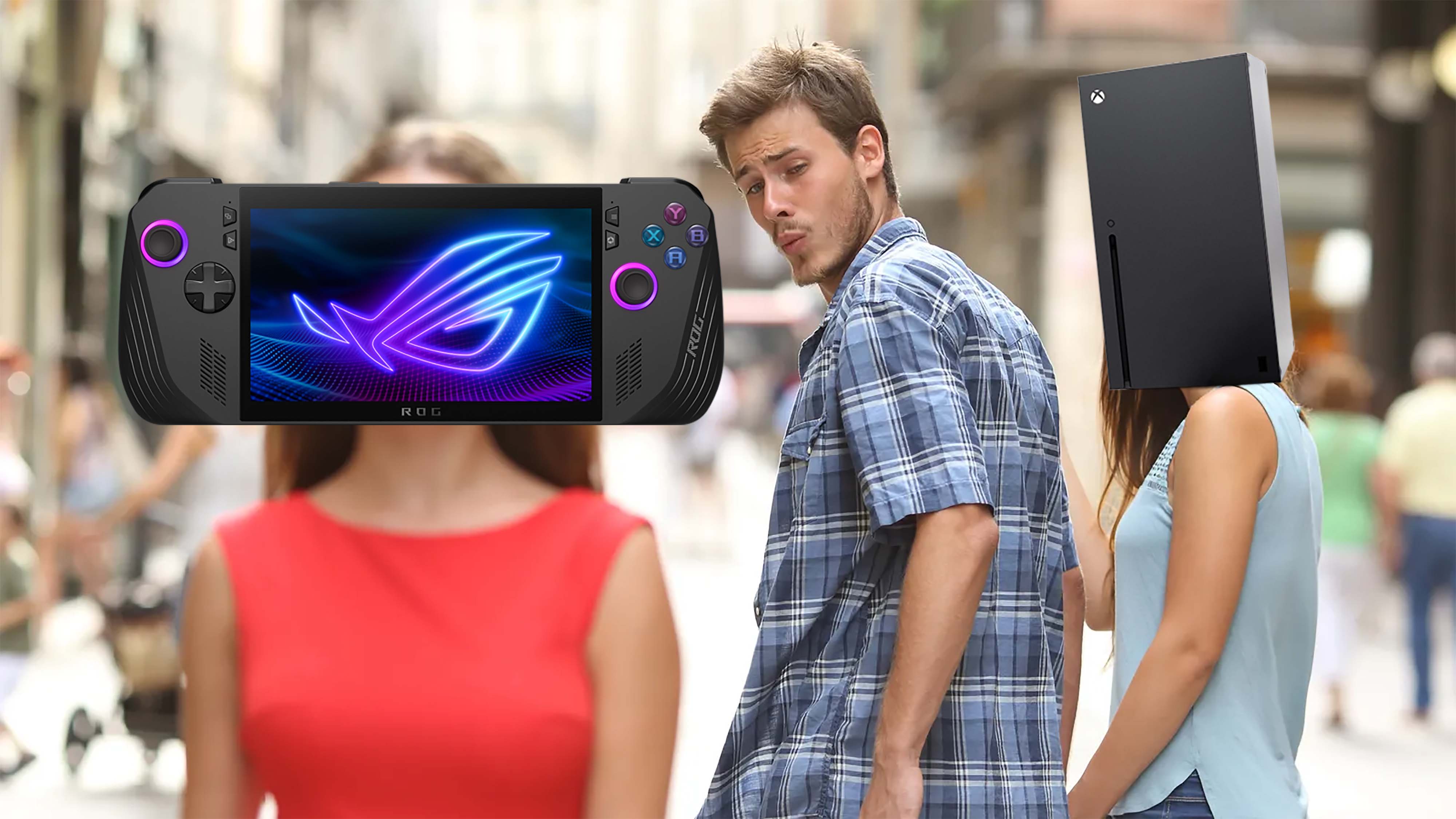CrystalDiskMark 5 is the latest Centennial app to hit the Windows Store

Microsoft's Project Centennial lets developers bring their "classic" desktop apps to the Windows Store for the first time. The system works by repacking Win32 executables with the new .appx designation. Additionally, devs can hook into Window 10's growing API list for Cortana, notifications, Live Tiles, and more.
In the last few days, we noticed that CrystalDiskMark 5 is now available. For those who don't know, CrystalDiskMark 5 is a very popular disk benchmarking tool. The free app is used by many – including us – to measure the read and write times of hard drive and solid-state drives in laptops and PCs. Since all drives are not created equal using this app gives you a good idea of the sequential read and write times using various settings.
While you always search for the CrystalDiskMark 5 webpage, download the zip and install the app it is a much easier process just to use the Store. Also, the developer can now publish and push updates to users directly, which was not possible before as a standalone app.
Hopefully, we'll see more "classic" apps like this grace the Windows Store. It's not only great for consumers to find apps and games, but it helps developers gain more attention too.
Note: Like all Centennial apps this is only compatible with Windows 10 PCs running the Anniversary Update.
Download CrystalDiskMark 5 from the Windows Store
Read More: Can Project Centennial apps run on Windows 10 Mobile (and other questions answered)
All the latest news, reviews, and guides for Windows and Xbox diehards.

Daniel Rubino is the Editor-in-chief of Windows Central. He is also the head reviewer, podcast co-host, and analyst. He has been covering Microsoft since 2007 when this site was called WMExperts (and later Windows Phone Central). His interests include Windows, laptops, next-gen computing, and wearable tech. He has reviewed laptops for over 10 years and is particularly fond of 2-in-1 convertibles, Arm64 processors, new form factors, and thin-and-light PCs. Before all this tech stuff, he worked on a Ph.D. in linguistics, performed polysomnographs in NYC, and was a motion-picture operator for 17 years.
